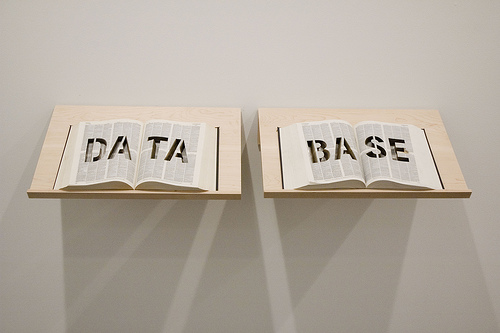
Image Credit:
As a student, graduate or undergraduate, working with an archive can be daunting, and the effort doesn't necessarily get easier when the archive is digital. But as more digital archives become available, it's worth considering how they might be used as classroom resources. My students in "Banned Books and Novel Ideas" this semester are reading several books and authors that have affiliated digital archives, and figuring out how best to introduce them to the resources available at such sites is an ongoing challenge.
My first attempt was based on an assignment I had in a research methods class, which involved going to the physical archive to pursue a very specific, focused series of questions. When we were reading Uncle Tom's Cabin, I went to Stephen Railton's Uncle Tom's Cabin & American Culture website and tried to think of questions that would not only lead my students to the particular parts of the archive that I wanted them to think about for class discussion, but also would get them curious enough to poke around for themselves and see what was available. Railton's website, like many other digital archives, offers a series of teaching options and pathways for students, but many of these seemed to require more time and outside reading than I wanted to spend in this case. In an effort to encourage in-class exploration, but not get them bogged down with reading, I created a new assignment. The first part asked them to navigate the interface in any way that made sense to them in order to answer a series of factual questions. The second part asked them to come up with a historical research question based on their reading of the book and the section headings on the archive, and describe how they might use the archive to pursue it.
The assignment generated productive engagement, but we ran out of time to talk about the answers, and I felt like the factual questions didn’t take us as far as they might have and some time could have been saved by providing a brief tour of the archive on the front end. For the next archival encounter, I had the students visit the online Walt Whitman Archive while we were reading selections from Whitman’s Leaves of Grass. I spent a few minutes at the beginning of class talking through the various sections of the archive, then set them to answering another set of questions. This time, I asked them to locate material related to the topic of the class (censorship: we’d talked about Anthony Comstock in previous sessions), to go through the images of Whitman and find their favorite, and talk about why they liked it, and to find three different versions of a poem – manuscript, periodical, and collection – and compare them. After they answered the questions, we spent some time discussing their answers.
Doing this at the beginning of class worked much better. The tour helped orient them as they answered the questions, and so they were able to do so more quickly. Students who finished with the assignment early poked around in other sections of the archive that I had shown them, and our discussion afterwards gave everyone the opportunity to talk about what they had found. We were able to compare photographs of Whitman and consider how he constructed his image visually, and how that compared to the way he constructs a poetic persona in his poetry. The last question, where we compared three versions of “The Dalliance of the Eagles,” was also productive. The variants my students discovered led into a discussion of some of the specifics of Whitman’s punctuation, word choice, and subject matter, and we were able to think about the (substantive, in this case) revisions between manuscript and print as a site of textual instability as well as one way to get at the meaning of the poem.
Next time, I might experiment with a more open-ended assignment, and I’ll give a few more tries before the semester is through, but it’s exciting to have the resources in class that allow students to explore the texts we’re reading and their surrogates in digital space.

